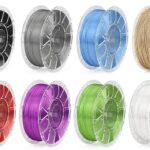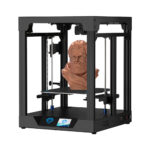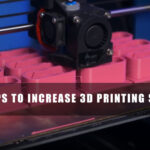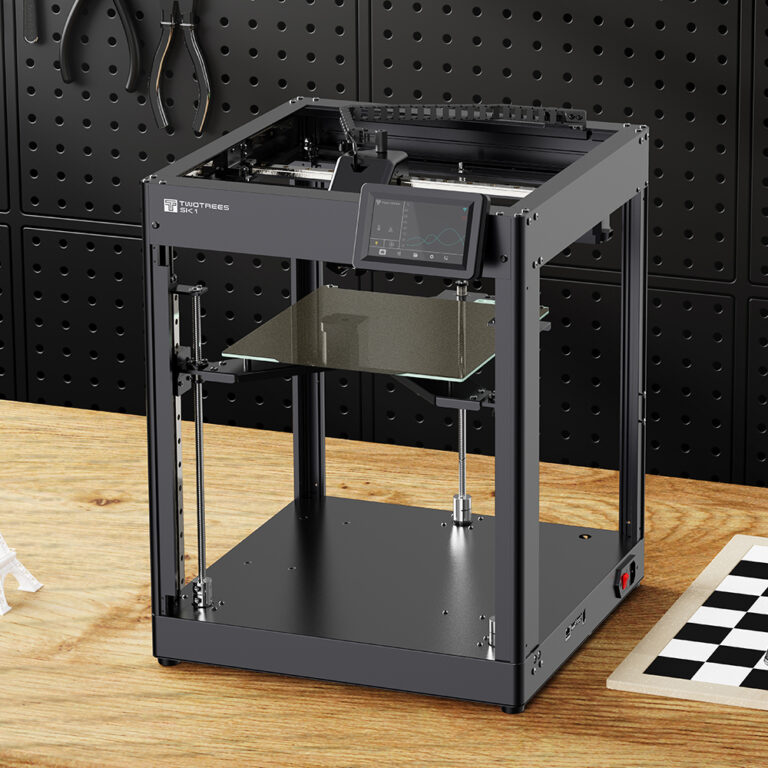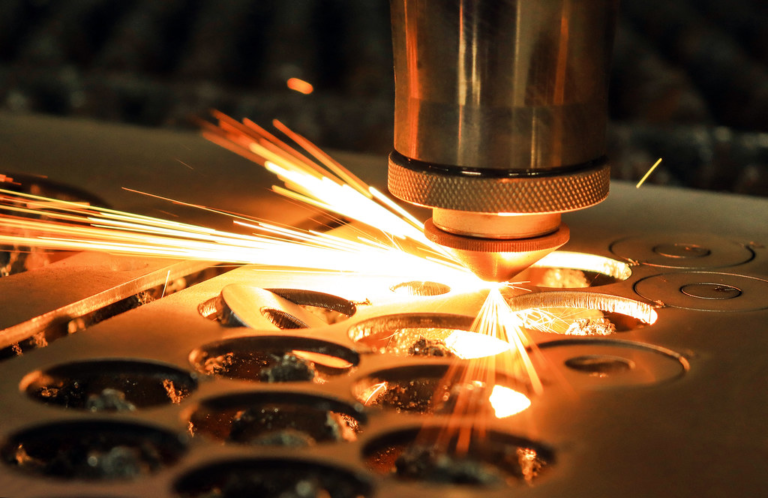PLA, ABS, and PETG are some most commonly and widely used thermoplastic 3D printing filaments. However, each material is with its unique feature and melting temperature. It’s critical to set your desktop 3D printers at the right printing temperature to avoid warping and cracking for your 3D prints and get ideal results. What’s the best PLA print temperature? And how about printing temperature for ABS, PETG, Nylon, and TUP? Keep reading and find the best temperature settings for the 3D printing nozzle and hotbed.
What’s the Best PLA Print Temperature?
PLA is the most popular filament among FDM 3D printer users due to its fewer limitations on printing conditions.
PLA could be printed at around 180°C – 230 °C temperature and get the best result at 210 °C. A hotbed is not required but if you do have a hotbed, make sure its temperature is configured at 20°C to 60 °C temperature. While printing with PLA filament, please make sure the cooling fan is working as PLA produces the best result with proper cooling. Overall, PLA is very easy to print and does not require much to succeed.
- Nozzle Temp: 180°C – 230 °C
- Hot Bed Temp: 20°C to 60 °C
- Cooling Fan: ON
What’s the Best ABS Printing Temperature?
ABS is also one of the most widely used 3D printing filaments. But it is still a bit far away from becoming the top spot, mainly because it is more difficult to print. ABS requires a slightly higher temperature. A nozzle temperature of 210 °C to 250 °C is best for printing and temperature for a heated bed requires to be set around 80°C to 110 °C. In addition, ABS needs to be printed enclosure so that it cools down very slowly. That’s because If ABS cools down quickly, it would shrink and deform. For the same reason, the cooling fan should be turned off when printing with ABS filament.
- Nozzle Temp: 210 °C to 250 °C
- Hot Bed Temp: 80°C to 110 °C
- Cooling Fan: OFF
What’s the Best PETG Print Temp?
PETG is a relatively new 3D printing filament for the market and it combines many features of PLA and ABS. It requires very high temperatures to be printed and nozzle printing temperature is recommended to be configured between 220°C and 250 °C. However, unlike ABS material, PETG filament does not require a heated hotbed for printing. PETG prints best with tape on the bed. Without it, the hotbed should be heated to 50°C to 75 °C to ensure that extruded filaments stick together. Since PETG won’t warp like ABS, the cooling fan could be turned on during printing. Although PETG is not as easy to use as PLA filaments, it has much fewer requirements than ABS, and it has been proved to be one of the most popular filaments today.
- Nozzle Temp: 220°C and 250 °C
- Hot Bed Temp: 50°C to 75°C (if without tape on printing platform)
- Cooling Fan: ON
What’s the Best 3D Printing Temperature for Nylon Filament?
Though nylon filament is more challenging to use for 3D printing, it could be a really powerful tool for 3D printing once understand how to print correctly with this material. Its required printing temperature is higher than that of any other filaments listed in this post. The recommended printing temperature is 240 °C to 260 °C for the nozzle and 70°C to 100 °C for the hotbed. The first layer of glue stick is also important since nylon may have serious problems with bed adhesion.
Nylon should be printed without the cooling fan turned on because it needs to keep the heat to ensure proper layer adhesion. Nylon is also a very hygroscopic 3D printing filament that absorbs any moisture in the air which would greatly reduces the print quality. Thus it’s recommended to dry out nylon filaments before printing.
- Nozzle Temp: 240°C and 260 °C
- Hot Bed Temp: 70°C to 100°C
- Cooling Fan: OFF
What’s the Best TPU Printing Temperature?
Among all kinds of flexible 3D printing material, TPU filament is one really useful while challenging option for users. TUP filament print at a similar temperature as PLA. To achieve better prints, printing temperature is suggested to be set around 210 to 230 °C and hotbed between 30 and 60 °C.
Since this material is very flexible, the filament could bend or stretch while going through extruder gear to the actual nozzle. Therefore, it is important to ensure filament follows in configured path, extrudes out slowly, and does not retract while printing. A quick fix for this issue would be slightly increasing the extruder temperature to avoid filaments from bending.
- Nozzle Temp: 210°C and 230 °C
- Hot Bed Temp: 30°C to 60°C
- Cooling Fan: ON
